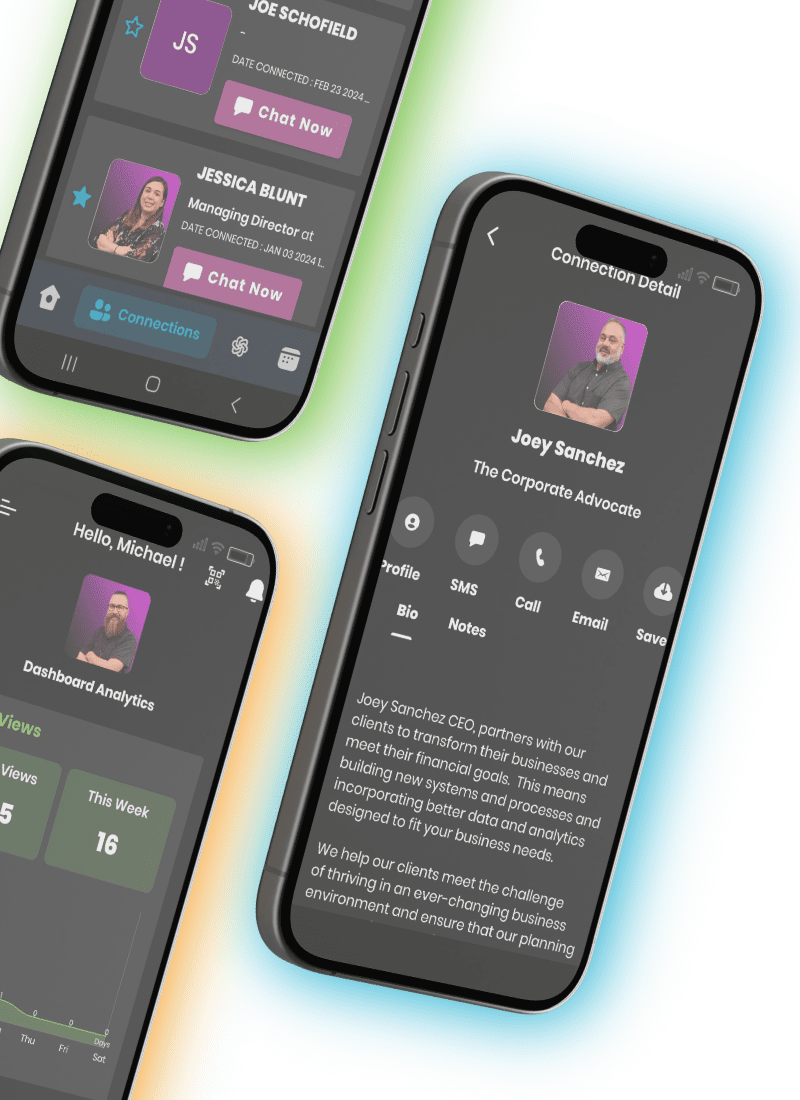In the dynamic landscape of digital media, having a well-crafted media kit is an indispensable tool for content creators, influencers, and businesses alike. A media kit serves as a comprehensive document that provides essential information about you or your brand to potential collaborators, sponsors, or the media. As a key gateway to establishing your online presence, understanding how to build a media kit is crucial for unlocking opportunities and fostering meaningful partnerships.
What is a Media Kit?
A media kit, also known as a press kit, is a curated collection of information that introduces and represents you or your brand to the public and potential partners. It goes beyond the surface-level details found on social media profiles, offering a deeper dive into your identity, achievements, and the value you bring to the table. This section will explore the definition and purpose of a media kit, emphasizing why it is a fundamental asset in today’s digital landscape.
Definition and Purpose
At its core, a media kit is a promotional package that encapsulates the essence of your brand or personal identity. It typically includes an overview of who you are, your achievements, contact information, and visuals that showcase your brand identity. The purpose of a media kit is to provide a concise yet comprehensive snapshot for individuals and organizations interested in collaborating with you. Whether you are a content creator, influencer, or business entity, a well-constructed media kit can be a powerful tool for making a memorable first impression.
Importance of a Media Kit
The significance of a media kit extends beyond a mere introduction; it plays a pivotal role in shaping how others perceive and engage with your brand. There are various dimensions of a media kit’s importance, and a thoughtfully designed media kit can contribute to establishing credibility, streamlining communication, and attracting potential partners.
Establishing Credibility
In a digital ecosystem saturated with information, establishing credibility is paramount. A professionally crafted media kit serves as a testament to your legitimacy and expertise. By presenting your achievements, accolades, and relevant statistics, you not only validate your standing in your niche but also instill confidence in those considering collaboration.
Streamlining Communication
In the fast-paced world of media and partnerships, clarity and efficiency are key. A well-organized media kit acts as a central hub where interested parties can quickly access essential information without navigating through multiple platforms. This streamlined communication enhances the chances of forging partnerships by minimizing the effort required on the part of potential collaborators.
Attracting Potential Partners
Beyond being informative, a media kit is a persuasive tool. Through compelling visuals, engaging content, and strategically placed highlights, you can attract the attention of potential partners who align with your values and goals. It can serve as a magnet for collaborations, opening doors to mutually beneficial relationships in the digital realm.
Understanding Your Audience
Building a media kit that resonates with its intended audience is a foundational step in ensuring its effectiveness. This section will guide you through the process of identifying your target audience, understanding their preferences, and tailoring your media kit to meet their needs.
Identifying Your Target Audience
Before diving into the creation of your media kit, it’s crucial to have a clear understanding of who your audience is. Demographics and psychographics are key factors in defining your target audience.
Demographics
Demographic information includes characteristics such as age, gender, location, and occupation. Understanding the demographic makeup of your audience provides insights into the type of content and partnerships that would be most relevant to them. For example, a media kit for a beauty influencer targeting a primarily young, female audience might highlight beauty product collaborations and trends popular among this demographic.
Psychographics
Psychographics delve into the values, interests, and behaviors of your audience. Knowing what your audience is passionate about, their hobbies, and the causes they support enables you to tailor your media kit content in a way that resonates on a deeper level. Collect and utilize psychographic data to create a media kit that establishes a meaningful connection with your audience.
Tailoring Your Media Kit to Audience Needs
Once you’ve identified your target audience, the next step is to customize your media kit to meet their specific needs and expectations. This involves presenting information in a way that speaks directly to your audience’s interests and concerns.
Relevant Metrics and Data
For data-driven audiences, incorporating relevant metrics and statistics is crucial. Whether it’s showcasing engagement rates, audience demographics, or growth trends, providing concrete data adds credibility and transparency to your brand. Consider which types of metrics to include and how to present them effectively to capture the attention of data-focused collaborators.
Customized Visuals
Visual appeal is a powerful tool for capturing and maintaining your audience’s attention. Tailoring the visual elements of your media kit to match the aesthetic preferences of your audience can make a significant impact. Whether it’s through color schemes, imagery, or graphic design elements, create visuals that resonate with your audience and contribute to a cohesive and visually appealing media kit.
Understanding your audience and tailoring your media kit accordingly ensures that your promotional material is not only seen but also appreciated by those who matter most.
Essential Components of a Media Kit
Assembling a compelling media kit involves carefully selecting and presenting key components that collectively represent your brand or personal identity. In this section, we will delve into the essential elements that constitute an impactful media kit, guiding you on how to craft each component to leave a lasting impression.
Introduction and Overview
The introduction sets the tone for your media kit, providing a snapshot of what to expect. Crafting a compelling introduction involves striking a balance between conciseness and informativeness, drawing your audience in while offering a glimpse of your unique value proposition.
Crafting a Compelling Bio
Your bio is the narrative thread that weaves together your journey, values, and aspirations. Practice the art of crafting a compelling bio, incorporating elements that resonate with your audience and effectively communicate your story. From your professional background to personal anecdotes, this is your opportunity to showcase what sets you apart.
Showcasing Achievements
Highlighting your achievements is a critical aspect of establishing credibility. Whether it’s awards, notable collaborations, or milestones, this section will explore how to showcase your achievements strategically. By presenting your successes in a clear and impactful manner, you reinforce your standing in your niche and capture the attention of potential collaborators.
Contact Information
While seemingly straightforward, your contact information is a cornerstone of effective communication. Ensuring accessibility and providing multiple channels for contact are essential for fostering collaborations and partnerships.
Ensuring Accessibility
Don’t forget that whatever information you’re sharing must be accessible. Whether it’s on your website, social media profiles, or within your media kit itself, creating seamless pathways for communication enhances your professionalism and encourages potential collaborators to reach out.
Including Multiple Contact Channels
Diversifying your contact channels goes beyond sharing an email address. From social media handles to business phone numbers, there are various channels through which collaborators may wish to reach you. By offering multiple options, you cater to diverse communication preferences, making it more convenient for potential partners to connect.
Branding Elements
Consistent branding is the visual glue that binds your media kit together. It’s important to use consistent logos, colors, and fonts to create a cohesive and memorable brand identity.
Consistent Logo Usage
Your logo is a visual representation of your brand. Consider the strategic placement and sizing of your logo within your media kit, ensuring it becomes a recognizable symbol associated with your identity.
Incorporating Brand Colors and Fonts
Consistency in color schemes and fonts enhances the visual appeal of your media kit. Carefully incorporate brand colors and fonts effectively, creating a visually harmonious document that reinforces brand recognition.
Media Highlights
In the age of digital media, showcasing your presence in the press and influential collaborations is a powerful endorsement. Learn to strategically highlight media mentions and collaborations to further enhance your credibility.
Showcasing Media Mentions
Whether it’s featured in major publications, interviews, or reviews, showcase media mentions in a way that adds credibility and authority to your brand. Consider testimonials, links to locations on the web your brand has been featured, and other evidence of your exposure and reach to impress potential collaborators.
Highlighting Influential Collaborations
Strategic collaborations contribute significantly to your brand story. Highlight influential collaborations and emphasize the mutual benefits and impact of these partnerships.
Crafting a compelling introduction and incorporating these essential components sets the stage for a media kit that not only informs but captivates. Creating a narrative that engages your audience and strategically presents key elements that reinforce your brand identity and credibility.
Creating Engaging Visuals
In the digital realm, visuals play a pivotal role in capturing attention and conveying information effectively. This section will guide you through the process of creating engaging visuals for your media kit, covering everything from professional photography to the strategic use of video content and infographics.
Professional Photography
Visual appeal begins with high-quality images that represent you or your brand authentically. Consider how professional photography may impact your media kit. Focus on selecting and curating images that convey your personality and values.
High-Quality Images
Investing in high-quality images is a non-negotiable aspect of a visually appealing media kit. Whether you learn to create the images yourself or choose to pay a photographer or graphic designer, filling your media kit with high-quality imagery shows potential partners that you’re serious about your brand.
Diverse Image Selection
Variety is key when selecting images for your media kit. Showcase diverse aspects of your brand or personality through a range of images. From professional headshots to behind-the-scenes glimpses, creating a comprehensive visual narrative contributes to a more engaging media kit.
Infographics and Data Visualizations
For conveying complex information in a digestible format, infographics and data visualizations are invaluable tools. In many ways, they are the best format to share complex data. Format all of your key data (like regular reach and site traffic) as a clear data visualization to help better sell your brand to collaborators.
Communicating Information Effectively
Whether it’s presenting audience demographics, engagement statistics, or the impact of collaborations, you need to transform data into visually appealing and easy-to-understand infographics. This not only enhances the visual appeal of your media kit but also ensures that key information is communicated efficiently.
Tools for Creating Engaging Visuals
You don’t need to be a graphic designer to create compelling visuals. Platforms like Canva and Adobe Express empower you to design eye-catching infographics and data visualizations, even if you don’t have a background in graphic design.
Video Content
Incorporating video content into your media kit adds a dynamic and personal touch. By creating engaging video content that complements the rest of your media kit, you can outshine and surpass your competition among collaborations.
Importance of Video in a Media Kit
Video provides a unique opportunity to showcase your personality, products, or services. The advantages of incorporating video content, whether it’s a personal introduction, a behind-the-scenes look, or a product demonstration, are inevitable.
Creating Engaging Video Content
Scripting, filming, and editing video content for your media kit is essential, and you’ll need to learn the skills to make it happen. From storytelling techniques to the use of visual elements, you’ll learn how to create videos that resonate with your audience and enhance the overall impact of your media kit.
Meet the Enriched Contact Platform
Get Your Free SyncVIP Profile Now!
Sign up for your free VIP profile now and start making connections that matter.
In a digital landscape dominated by visual content, creating engaging visuals is a non-negotiable aspect of a standout media kit. Select high-quality images, design effective infographics, and leverage video content to create a visually compelling narrative that captivates your audience.
Compelling Content Writing
While visuals grab attention, compelling content is what keeps your audience engaged and informs them about your brand or identity. This section will guide you through the art of crafting engaging written content for your media kit, covering everything from the about me section to showcasing achievements and incorporating testimonials.
Crafting an Engaging About Me Section
The “About Me” section is your opportunity to connect with your audience on a personal level. Craft an engaging and authentic narrative that not only introduces you but also establishes a connection with your audience. Focus on your brand’s personality, showcasing what you stand behind as much as you showcase what you can provide.
Telling Your Story
Your story is unique, and you need to tell it effectively. From your background to the values that drive you, creating a compelling narrative ensures that your audience gets to know the person or brand behind the media kit.
Incorporating Personality
Injecting personality into your writing makes your media kit more relatable. Infuse your unique voice, tone, and style into the content, creating an authentic representation of who you are.
Showcasing Achievements and Milestones
Quantifiable achievements and impactful milestones add substance to your media kit. Present your achievements and key milestones in a way that showcases your growth and reach, giving potential collaborators something to get excited about.
Quantifiable Metrics
Highlighting specific metrics, such as audience reach, engagement rates, or growth statistics, adds credibility to your achievements. Present quantifiable metrics clearly and precisely, demonstrating the tangible impact of your efforts.
Impactful Milestones
From the launch of your brand to significant collaborations, showcasing milestones creates a narrative of growth and success. These milestones not only illustrate what’s great about your brand but also effectively demonstrate how fast your brand is growing.
Testimonials and Reviews
Social proof is a powerful tool in building trust and credibility. Incorporate testimonials and reviews into your media kit, allowing potential partners to see the positive experiences of collaborators, clients, or customers.
Importance of Social Proof
Potential partners and collaborators seek assurance, and testimonials provide just that. Gather the best of the bunch to showcase within your media kit, emphasizing to potential partners how smart a choice it is to work with your brand.
Strategically Placing Testimonials
Where and how you place testimonials within your media kit can significantly impact their effectiveness. Placing your testimonials strategically throughout your media kit ensures they enhance the overall narrative and build trust with your audience.
Crafting compelling written content is a crucial aspect of building a standout media kit. Creating an engaging “About Me” section, showcasing achievements and milestones, and strategically incorporating testimonials will all reinforce your brand story and build credibility.
Optimizing for SEO
Online, visibility is key, and optimizing your media kit for search engines is crucial for attracting the right audience. This section will guide you through the process of effective SEO optimization, from conducting keyword research to implementing on-page strategies.
Keyword Research
Before diving into SEO optimization, it’s essential to identify relevant keywords that align with your brand or identity. This section will explore the process of keyword research, helping you pinpoint the terms and phrases that potential collaborators or partners are likely to search for.
Identifying Relevant Keywords
Understanding the language your audience uses is the foundation of effective keyword research. You’ll need to identify keywords specific to your niche and industry and use them correctly, ensuring that your media kit is easily discoverable by those seeking relevant collaborations.
Utilizing Long-Tail Keywords
Long-tail keywords offer a strategic advantage in capturing specific search queries. Long-tail keywords work the same as their shorter counterparts but are often more specific and contain more information to use for search. Optimizing for them allows more targeted searches to find your media kit, ensuring that those who find you are more likely looking for what you offer.
SEO-Friendly Formatting
Beyond keyword inclusion, the way you structure and format your content influences its search engine visibility. This section will explore on-page SEO strategies, emphasizing the significance of header tags and meta descriptions.
Header Tags and Their Significance
Proper use of header tags (H1, H2, H3, etc.) not only improves the readability of your content but also signals the importance of specific sections to search engines. Add your keywords to the header tags, optimize them for SEO, and ensure that your media kit is well-organized and easily scannable.
Incorporating Meta Descriptions
Meta descriptions provide a concise summary of your content in search engine results. Crafting compelling meta descriptions not only entices clicks but also contributes to improved search engine rankings when keywords are added correctly.
Backlinking Strategies
Building credible backlinks is a fundamental aspect of SEO that enhances your website’s authority. Backlinks are locations elsewhere on the web that are linked to your content, and they help build the SEO authority of your media kit. Often, they are as simple to receive as asking for them from the websites you’d like to contribute to your SEO.
Guest Posting for Increased Visibility
Guest posting is a strategic way to build backlinks and establish authority in your niche. Learn to identify guest posting opportunities, craft guest post pitches, and create content that not only provides value but also enhances your brand’s online presence.
Optimizing your media kit for SEO is a proactive approach to increasing visibility and attracting the right audience.
Distribution and Promotion
Creating a stellar media kit is only half the battle; effective distribution and promotion are essential for reaching your target audience and potential collaborators. This section will guide you through strategic methods for distributing your media kit, utilizing social media platforms, email outreach, and measuring success through analytics.
Utilizing Social Media Platforms
Social media is a powerful tool for reaching a wide audience and potential collaborators. Share your media kit with brands and collaborators you want to connect with using social media channels. Often times a well-crafted social media post is enough to draw attention to your kit.
Tailoring Content for Each Platform
Each social media platform has its own dynamics and audience preferences. Learn how to adapt your media kit content for platforms like Instagram, Twitter, LinkedIn, and others, ensuring optimal engagement and impact.
Leveraging Hashtags and Trends
Incorporating relevant hashtags and tapping into current trends can significantly amplify the reach of your media kit. When you see relevant trends and hashtags on the rise, try to catch the wave by adding your media kit to the stream. However, use caution to “read the room” when you try to jump on a trend. Sometimes it’s not the right time to jump on a trend, and you’ve got to be able to exercise correct judgement.
Email Outreach
Email remains a direct and effective means of communication. This section will guide you through the process of crafting an effective email pitch, building and maintaining relationships through email outreach, and utilizing this medium to share your media kit with potential collaborators.
Crafting an Effective Pitch
Your email pitch is the first point of contact with potential collaborators. Emails need to be direct and to the point if you want to keep your readers engaged. That’s even more important when crafting an email pitch. You need to catch the reader’s attention fast. Learn to use subject lines and preview text to capture their attention quickly. Follow it with carefully tested email copy that engages with collaborators and encourages them to work with you.
Building and Maintaining Media Relationships
Relationships are key in the world of media and collaborations. Building and maintaining relationships with media contacts, influencers, and other collaborators is paramount to long-term success. From personalized follow-ups to providing ongoing updates, effective relationship management enhances your chances of successful collaborations.
Measuring Success
To continuously improve and refine your media kit strategy, measuring success is crucial. This section will explore the use of analytics tools to track the performance of your media kit, providing insights into audience engagement, reach, and areas for improvement.
Utilizing Analytics Tools
From Google Analytics to social media insights, you’ll need to use analytics tools to track key metrics. Understanding how your media kit performs allows you to make data-driven decisions and optimize your strategy for better results.
Iterative Improvements Based on Performance
Measuring success is not just about gathering data but also about making informed improvements. While data analysis can be challenging, learning to process the key metrics into usable data will change the way you build those connections with influencers.
Effectively distributing and promoting your media kit is the final step in maximizing its impact. You’ll need to master the ideas we covered to distribute your media kit well and get the results you want from it.
Conclusion
As we reach the culmination of this guide on how to build a media kit, let’s recap the key steps and insights that can empower you to create a standout and impactful promotional tool for your brand or personal identity.
Recap of Key Steps
- Understanding Your Audience: Tailor your media kit to resonate with your target audience by identifying demographics, psychographics, and customizing content accordingly.
- Essential Components: Craft a compelling introduction, showcase achievements, provide contact information, and highlight media mentions and collaborations to establish credibility.
- Creating Engaging Visuals: Utilize high-quality images, infographics, and video content to visually communicate your brand identity and captivate your audience.
- Compelling Content Writing: Craft an engaging “About Me” section, showcase achievements and milestones, and incorporate testimonials to create a compelling narrative.
- Optimizing for SEO: Conduct keyword research, implement SEO-friendly formatting, and build credible backlinks to enhance the search engine visibility of your media kit.
- Distribution and Promotion: Utilize social media platforms, engage in email outreach, and measure success through analytics tools to ensure widespread distribution and effective promotion.
Regularly Update Your Media Kit
A standout media kit is not a static document; it’s a dynamic representation of your evolving brand or identity. Regular updates ensure that your media kit remains relevant, reflecting your latest achievements, collaborations, and growth. Set a schedule for periodic reviews and updates to keep your promotional tool at its best.
Final Thoughts on Building a Standout Media Kit
For influencers, a well-crafted media kit is a powerful asset that opens doors to collaborations, partnerships, and opportunities. Beyond the practical aspects covered in this guide, remember that authenticity, passion, and a genuine connection with your audience are the foundations of a truly standout media kit. As you navigate the dynamic world of digital media, let your unique story and value proposition shine through in every section and element of your media kit.
Building a standout media kit is not just about following a set of guidelines; it’s about expressing who you are or what your brand represents. Use this guide as a roadmap, but don’t forget to infuse your personality and creativity into every aspect of your media kit. Here’s to creating a media kit that not only informs but leaves a lasting impression on everyone who encounters it. Best of luck on your journey to media kit mastery!















